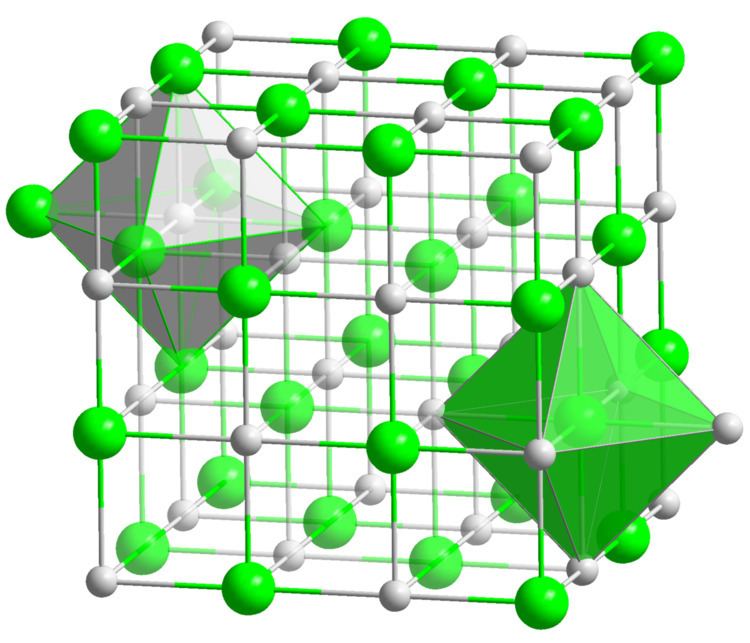Melting point 3,900 °C Molar mass 190.5 g/mol Appearance black odorless powder | Formula HfC Density 12.2 g/cm³ | |
 | ||
Hafnium carbide (HfC) is a chemical compound of hafnium and carbon. With a melting point of about 3900 °C it is one of the most refractory binary compounds known. However, it has a low oxidation resistance, with the oxidation starting at temperatures as low as 430 °C.
Hafnium carbide is usually carbon deficient and therefore its composition is often expressed as HfCx (x = 0.5 to 1.0). It has a cubic (rock-salt) crystal structure at any value of x.
Hafnium carbide powder is obtained by the reduction of hafnium(IV) oxide with carbon at 1800 to 2000 °C. A long processing time is required to remove all oxygen. Alternatively, high-purity HfC coatings can be obtained by chemical vapor deposition from a gas mixture of methane, hydrogen, and vaporized hafnium(IV) chloride. Because of the technical complexity and high cost of the synthesis, HfC has a very limited use, despite its favorable properties such as high hardness (>9 Mohs) and melting point.
The magnetic properties of HfCx change from paramagnetic for x ≤ 0.8 to diamagnetic at larger x. An inverse behavior (dia-paramagnetic transition with increasing x) is observed for TaCx, despite its having the same crystal structure as HfCx.
